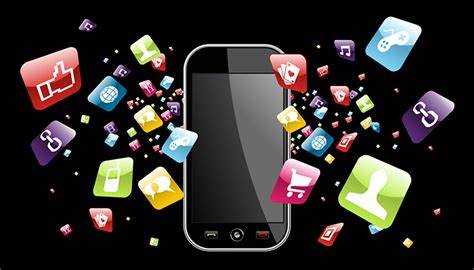In today’s digital age, smartphones have become an indispensable part of our lives. With the vast array of apps available at our fingertips, it’s easy to get carried away and download numerous applications that we may only use once or twice. As a result, our devices can quickly become cluttered and bogged down with unused apps, taking up valuable storage space and potentially impacting our device’s performance. However, by learning effective methods to delete apps and reclaim space, we can take back control of our devices and ensure optimal functionality. This article will explore various strategies and techniques to efficiently delete apps, freeing up valuable space and enhancing our digital experience.
Taking Back Control: Effective Methods to Delete Apps and Reclaim Space
In today’s digital age, our smartphones have become an extension of ourselves. They hold our memories, personal data, and a vast number of applications that help us navigate through our daily lives. However, as time goes by, we often find our phones cluttered with apps we no longer use or need. Deleting these unused apps can not only help declutter our devices but also reclaim valuable storage space. Here are some effective methods to delete apps and regain control over your smartphone.
1. Assess Your App Usage:
Start by evaluating the apps you have installed on your device. Take a few moments to consider which apps you frequently use and which ones have become redundant. Look for apps that you haven’t opened in months or those that have lost their relevance. This evaluation process will help you identify the apps that need to be deleted.
2. Prioritize Your Essentials:
Once you’ve assessed your app usage, prioritize the apps that you consider essential for your daily life. These could be apps for communication, banking, weather updates, or health and fitness tracking. By identifying your essential apps, you can ensure that you only delete the ones that are truly unnecessary.
3. Utilize Built-in Tools:
Most smartphones come with built-in tools to help manage your apps and storage space. For iOS users, navigate to the “Settings” and select “General,” then “iPhone Storage.” Here, you will find a list of all your apps, sorted by size. Tap on any app, and you’ll be given the option to offload or delete it. Offloading an app removes it from your device while keeping its data intact, which can be useful for apps you plan to reinstall later. For Android users, go to “Settings,” select “Apps,” then choose the app you want to delete and tap “Uninstall.”
4. Use App Managers:
If your smartphone doesn’t have a built-in app management feature, consider using third-party app managers. These tools provide a comprehensive overview of your installed apps and their storage usage. They often offer additional features like app recommendations, permission management, and backup options. Some popular app managers include AppMgr III, SD Maid, and Cx File Explorer.
5. Consider Cloud Storage:
In some cases, you may not want to delete an app entirely but still want to regain storage space. Many apps, such as social media platforms or cloud storage services, allow you to store data in the cloud. By offloading data to the cloud, you can free up space on your device without losing access to your files or sacrificing functionality.
6. Regularly Clean Up:
Deleting apps and reclaiming space should not be a one-time event. To maintain control over your smartphone, make it a habit to regularly assess your app usage and delete any apps you no longer need. By doing this periodically, you can prevent your device from becoming cluttered and ensure that it runs smoothly.
Deleting unused apps not only declutters your smartphone but also improves its performance and extends its battery life. It allows you to reclaim valuable storage space for important files, photos, or new apps that you may want to install in the future. By following these effective methods to delete apps, you can take back control over your device and create a more streamlined and efficient digital experience.



